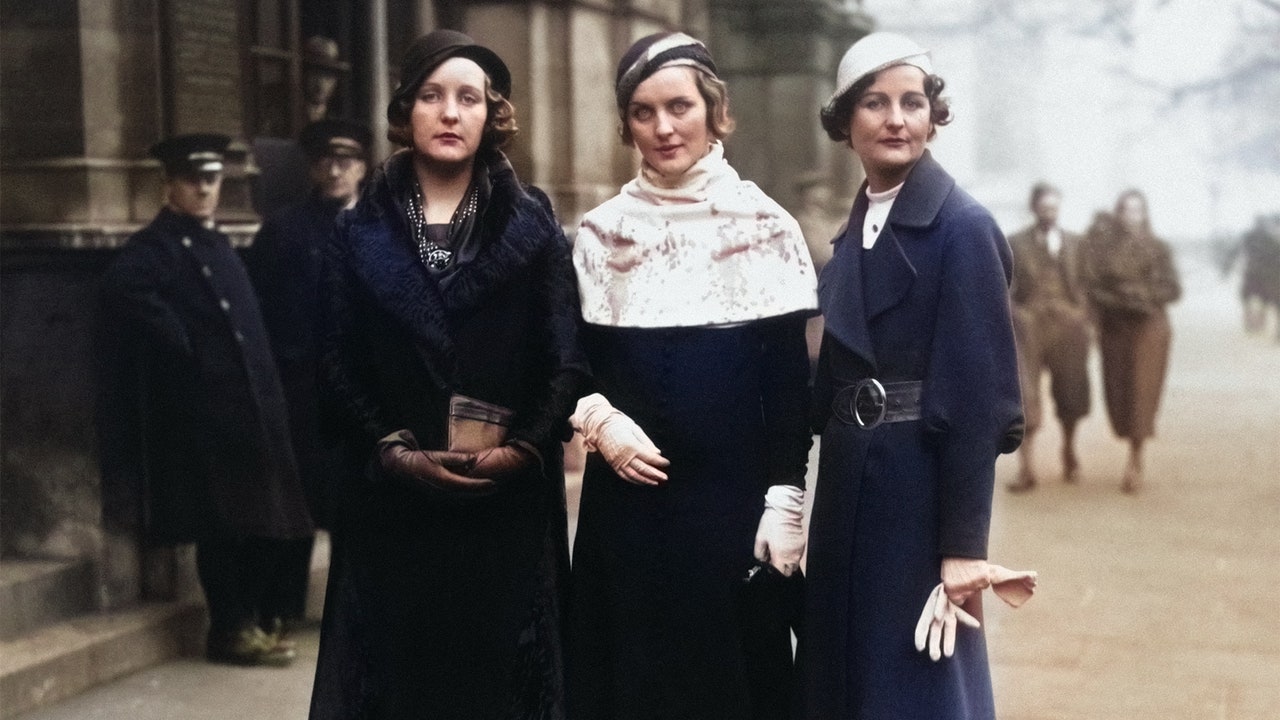Were the Mitford sisters not real, even the producers of the modern drama Outrageous might dismiss the characters as implausible. The series, which p
Were the Mitford sisters not real, even the producers of the modern drama Outrageous might dismiss the characters as implausible. The series, which premieres on BritBox June 18, revolves around these six gorgeous, passionate, and defiant sisters at the cusp of World War II, whose social circles have them schmoozing with Adolf Hitler, Winston Churchill, Oswald Mosley, Evelyn Waugh, and Cecil Beaton—and in later years, the Duke and Duchess of Windsor, John F. Kennedy, and Maya Angelou.
However incredible it sounds, it’s all true. Despite all being raised in the same upper-class Oxfordshire Jacobean manor, the half-dozen Mitford sisters grew in six drastically different directions. (One Mitford brother, their beloved Tom, died newborn.) Of the sisters, one became a Nazi, another a socialist. All but one married; all but one divorced. Most lived long lives, except the one who shot herself in the head. Somehow, against all odds, they remained (mostly) close for almost a century.
“The Six,” as they were known, “were never out of the papers—sort of the Kardashians of the era,” says biographer Mary S. Lovell, author of The Sisters: The Saga of the Mitford Family, the book on which the modern show is based. Like the Kardashians, each is uniquely Mitfordian. As BritBox’s Outrageous premieres in America, here’s a quick crash course on which of the six real-life Mitford sisters is which—and why they’re still captivating us after all these years.
Nancy Mitford, the Writer
A.k.a. Lady, Nuance, Susan, Soo
Born in 1904, the eldest daughter of David Freeman-Mitford (called “Farve”) and Sydney Bowles (whom she called “Muv”) was spoiled and tough, and would much have preferred to be an only child. At 10, Nancy’s paternal uncle died, suddenly leaving her father next in line to the Mitford family fortune—which wasn’t as life-changing it seemed. “There was lots of land and massive country estates, but no money,” explains Lovell.
So Nancy grew up a strange mix of affluent and penniless, both part of and not quite of her Downton Abbey–esque world. She rebelled accordingly, and by the Roaring Twenties, Nancy’s badly behaved circle of flapper friends were known by British tabloids as the “Bright Young Things.” Among them were Cecil Beaton and Evelyn Waugh, who documented their debauchery as Nancy did: in gossip columns published in Vogue and Harper’s Bazaar.
By 1930, the eldest Mitford sister was a professional writer, using her loosely disguised eminent family as literary fodder. Not all her sisters approved of her candor. Nancy published work based on them just the same, most obviously in her bestseller, The Pursuit of Love. “Nancy made a living gently satirizing them all,” says biographer Laura Thompson, author of another book, The Six: The Lives of the Mitford Sisters.
But Nancy was less successful in love. When her first engagement ended (that fiancé preferred men), she impulsively married Peter Rodd, an aimless philanderer. They soon separated and never had children, making Nancy the only (living) Mitford sister not to raise progeny of her own—and therefore a source of cruel pity from the others.
Writer friend James Lees-Milne described a “vein of callousness” in the Mitfords, but Nancy was the worst offender. “She could hurt people without even thinking,” says Lovell. Nancy doled out bullying nicknames like “Chunky,” for her sister Pam, and “Nine,” for her sister Deborah. (The moniker was inspired by Deborah’s supposed mental age.) Still, the ruthless elder sister proved imperative. “Nancy is the creator of the Mitford myth,” says Thompson. “How would we see the Mitfords without her? We might not.”
The Mitford Family. (Standing L to R) Bessie Carter, Joanna Vanderham, Toby Regbo, James Purefoy, Anna Chancellor and Shannon Watson; (Seated L to R) Zoe Brough, Isobel Jesper Jones and Orla Hill.Courtesy of BritBox and UKTV.
Pamela Mitford, the Countrywoman
A.k.a. Woman, Wooms, Chunky, the “Forgotten Sibling”
Poor Pamela, a child with polio that left one leg slightly shorter than the other, took the brunt of Nancy’s abuse and retreated almost immediately to dachshunds and ponies. “She was passive, which was very non-Mitford,” writes Thompson. Similarly un-Mitfordian, she eschewed publicity and preferred a private life in the country, prospering at all things domestic—from gardening vegetables to cooking pork to breeding Swiss chickens. For mastering the feminine arts, Pamela’s family nicknamed her “Woman.”

COMMENTS